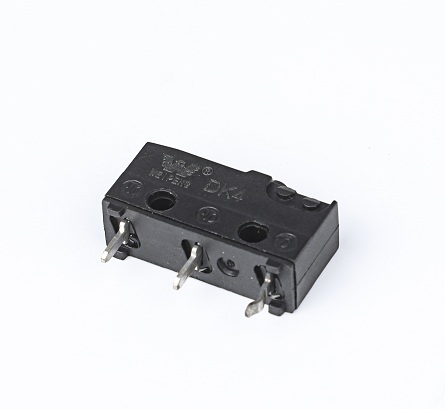The Building Blocks: Materials in the Construction of Micro Switches for Automotive Excellence
2024-01-11
Introduction:
Amidst the intricate web of components within an automobile, micro switches quietly but decisively contribute to the seamless operation of critical systems. The materials used in the construction of these tiny yet powerful switches play a pivotal role in determining their reliability, durability, and performance. In this blog post, we'll delve into the common materials employed in the construction of micro switches for automotive use, exploring why these materials are chosen and how they contribute to the switches' effectiveness.
1. Plastics:
a. Polyamide (PA):
- Properties: Polyamide, commonly known as nylon, is renowned for its toughness, impact resistance, and low friction. It exhibits excellent wear resistance and can withstand a wide temperature range.
- Use in Micro Switches: Polyamide is often used in the construction of the outer casing or housing of micro switches due to its durability and resistance to mechanical stress.
b. Polybutylene Terephthalate (PBT):
- Properties: PBT is a high-performance thermoplastic with good electrical properties, heat resistance, and dimensional stability.
- Use in Micro Switches: PBT is employed in the construction of components requiring excellent dimensional stability, such as the actuator or button of a micro switch.
2. Metals:
a. Silver Alloy:
- Properties: Silver alloys are known for their excellent electrical conductivity and corrosion resistance.
- Use in Micro Switches: Silver alloy is often used for the contacts within micro switches. The high conductivity ensures efficient signal transmission, while corrosion resistance contributes to long-term reliability.
b. Stainless Steel:
- Properties: Stainless steel is corrosion-resistant, durable, and exhibits high tensile strength.
- Use in Micro Switches: Stainless steel is commonly used for springs and other internal components, contributing to the overall robustness and longevity of micro switches.
3. Ceramics:
a. Alumina (Al₂O₃):
- Properties: Alumina ceramics offer high mechanical strength, excellent wear resistance, and thermal stability.
- Use in Micro Switches: Alumina ceramics are employed in components requiring high mechanical strength, such as the insulating base or substrate of micro switches.
4. Rubbers:
a. Silicone Rubber:
- Properties: Silicone rubber is known for its flexibility, resistance to extreme temperatures, and excellent electrical insulating properties.
- Use in Micro Switches: Silicone rubber is often used as a sealing material in micro switches, providing protection against moisture, dust, and other environmental factors.
5. Other Materials:
a. Copper Alloy:
- Properties: Copper alloys, such as phosphor bronze, offer a good balance of electrical conductivity and mechanical strength.
- Use in Micro Switches: Copper alloys may be utilized in various components, including terminals and connectors, contributing to electrical performance and durability.
Why These Materials?
1. Durability and Longevity:
- The selected materials are chosen for their ability to withstand mechanical stresses, ensuring the micro switch's longevity even in challenging automotive environments.
2. Electrical Conductivity:
- Metals like silver alloy and copper alloys are selected for their excellent electrical conductivity, facilitating efficient signal transmission within the switch.
3. Corrosion Resistance:
- Materials like stainless steel and silver alloys are corrosion-resistant, safeguarding the internal components from degradation over time.
4. Environmental Resistance:
- Plastics and rubbers with suitable properties provide protection against moisture, dust, and other environmental factors, enhancing the switch's reliability.
5. Thermal Stability:
- Ceramics and high-performance plastics contribute to the thermal stability of micro switches, ensuring consistent performance across a range of temperatures.
Conclusion:
In the intricate dance of materials within micro switches for automotive applications, each component serves a purpose in ensuring the reliability, durability, and efficiency of these tiny conductors. Whether it's the toughness of plastics, conductivity of metals, resilience of ceramics, or protective properties of rubbers, the materials selected reflect a meticulous engineering approach to meet the demanding conditions of the automotive environment. As automotive technology continues to advance, the selection and integration of materials in micro switches remain a key element in enhancing the overall performance and reliability of modern vehicles.



